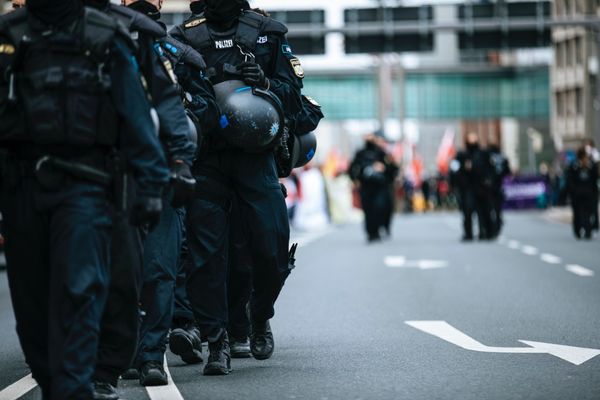Just two days after forming the government in Telangana, the Congress party rolled out the Mahalakshmi scheme, offering free travel to women, girls, and transgender people on State-run buses from December 9 last year. On December 15, zero-fare tickets began to be issued. Now, up to 62% of bus passengers are women which the Telangana State Road Transport Corporation (TSRTC) that operates the buses, claims is a jump from the earlier composition.
As per official figures, nearly 6.85 crore zero-fare tickets have been issued by the TSRTC, between December 15, 2023, and January 9, 2024. Overall occupancy, which hovered around 50% in mid-November, has seen a surge. Approximately half of the 97 depots in the State recorded full occupancy in the first few days of the scheme being launched. It breached the 100% mark on December 23. Since that date, occupancy rate has remained largely steady, and consistently above the 80% mark. The substantial spike in occupancy rates indicates an increase in access to public transport for women.
Anecdotal evidence suggests that women are largely satisfied with the scheme. “I used to spend ₹50 for a bus ride from my home in Secunderabad to my office near Raj Bhavan, and an equal amount on the return journey. The scheme has resulted in big savings. In general, women who travel by bus are happy with the Mahalakshmi scheme because of the money they are able to save,” says Lakshmi K., who works as an office administrator at a private company in Hyderabad.
While the Congress government has been emphasising the success of the scheme, with women expressing widespread approval, the spotlight has now shifted to other issues. At the forefront is the urgent need for augmentation of the TSRTC’s ailing, ageing bus fleet.
TSRTC is a largely public-funded entity that began operations in 1932 under the Road Transport Department during the Nizam’s rule. With Sankranthi, the harvest festival on January 15, and the biennial Medaram jatara — a festival of tribal origin – fast approaching in February, the need for more buses is more pronounced.
The TSRTC in 2023 had a fleet strength of 9,053, of which approximately 2,700 ply in the Greater Hyderabad Zone, including Hyderabad city and the IT corridor, an area of approximately 650 square km. “The government must understand that we need more buses. The current requirement is between 2,500 and 2,900 buses,” a TSRTC official, requesting anonymity, says.
But officials also know that losses to the tune of thousands of crores which the corporation has incurred over the last decade makes this demand challenging. This is precisely the reason why the State government should step in, they argue.
In March 2022, there were nearly 700 city buses that were either 15 years old, or had run 13 lakh km, a metric used to determine the obsoleteness of such vehicles. Up to 900 Palle Velugu buses that run in mofussil areas, had approached the scrapping threshold.
In Telangana, the ideal bus-to-population ratio is 60 buses per 1 lakh people. The Greater Hyderabad Zone currently operates only 2,700 buses, which is less than half the number of buses in Bengaluru, another thriving IT hub with a booming real estate market. The Bangalore Metropolitan Transport Corporation manages a fleet of approximately 6,400 buses.
Need for fleet expansion
Low-cost or free public transport is a form of empowerment, say experts, such as development economist Amir Ullah Khan from the Centre for Development Policy and Practice in Hyderabad. “The single, simple reason for low cost or free public transport should be to reduce the cost of accessing health and education,” he says. “Two of the most significant costs for people are house rent and transport,” he adds.
So, one of the reasons for low workforce participation of women in India — which in urban areas is around 25%, according to the Period Labour Force Survey Report 2022-23, — is the lack of affordable mobility. He feels more buses are needed to amp up women’s mobility.
Anant Maringanti, director of Hyderabad Urban Lab, a multi-disciplinary urban research centre, says free bus travel should be accompanied by a strong network of routes and timely services. “If there are few buses on routes, or if some routes do not exist, then of what use is free travel,” he asks.
A sample survey conducted in the first week of January by Helping Hand Foundation (HHF), a non-governmental organisation which connects those from marginalised sections of society with government and private healthcare facilities to facilitate their treatment, suggested that about 12% of its 3,000-odd respondents were using the Mahalakshmi scheme to access healthcare facilities. Free travel led to significant savings per trip, the survey noted.
While the findings may only be indicative, given that the data was collected from HHF helpdesks, it does suggest a positive change, one that is in congruence with experts’ opinion.
A clearer picture on the impact of the Mahalakshmi scheme will emerge only if and when either the Telangana government or the TSRTC undertakes such a study. The Tamil Nadu government had conducted similar research and found out that women were saving up to 12% of their income due to free travel, which also ensured better access to healthcare facilities.
However, sources say there are no such plans for a study, at least in the near future.
Salma Fatima is a sales executive who works at a clothing store for women in Banjara Hills, a plush locality in Hyderabad. Her savings after the zero-fare tickets were issued amount to about ₹1,500 per month. Her monthly salary is ₹12,000. “I live in Golconda in Hyderabad’s Old City. I take the bus from Mehdipatnam to a mall in Banjara Hills, a distance of roughly 8 kilometres. From there, I walk to the shop, a few metres away,” she says.
Bursting at the seams
Much like other women passengers, Fatima underscores the issue of an inadequate number of buses which has been resulting in overcrowding. Over the past two weeks, she says she has witnessed two ugly confrontations between female passengers. “A disagreement over seats took a nasty turn. This happened once on the 19-K bus and 49-M bus late in the evening. If the TSRTC gives us more buses, this situation will not arise,” she says. Video clips of women engaged in disagreements aboard TSRTC buses have been circulating on social media, especially on WhatsApp.
Another commuter points out that the issue of overcrowding has led to a longer waiting time for buses. “We have to wait for buses which are less crowded during peak hours, which pushes the waiting time up by 20 or 30 minutes,” she says.
The TSRTC, too, has taken note of overcrowding. In an attempt to tackle the situation, the leadership, on more occasions than one, has urged citizens not to take the bus if the travel is not necessary. The corporation has appealed to passengers to use its Palle Velugu buses for short-distance commute.
In 2019, there was a 52-day strike by the TSRTC workers, demanding merger with the State government and a hike in salaries, along with 24 other demands. In response to the strike the then Chief Minister had threatened to privatise TSRTC. The COVID-19 pandemic, when on-road mobility was at an all-time low, coupled with a rise in fuel prices, pushed the corporation into deep losses to the tune of ₹2000 crore in 2022.
Officials on toes
The TSRTC recently decided to reroute 4,484 buses designated as Sankranti specials along the more popular routes. Officials anticipate that this year people boarding buses will be much higher than previous years, owing to the Mahalakshmi scheme.
While they claim that they are equipped to deal with passenger requirements, the Medaram Jatara has got them worried. According to the State government’s estimates, at least 50 lakh people are expected to travel to Medaram, a village in Mulugu district of Telangana, for the historic Sammakka Saralamma Jatara which celebrates the two tribal goddesses.
But the number of passengers headed to the jatara might go up on account of the Mahalakshmi scheme, the government surmises. TSRTC officials have been burning the midnight oil to ensure passenger requirements are met and say about 6,000 buses will be rerouted.
“In addition to the nearly 2,000 buses that will be added to the fleet, we need support from the government to buy around 2,900 more buses. The Mahalakshmi scheme is a success and it means there is demand for buses everywhere, including within the Hyderabad city limits. Diverting buses to other sectors during festive season has become difficult because of this surging demand. In other circumstances, this would not have been a problem,” another TSRTC official says.







